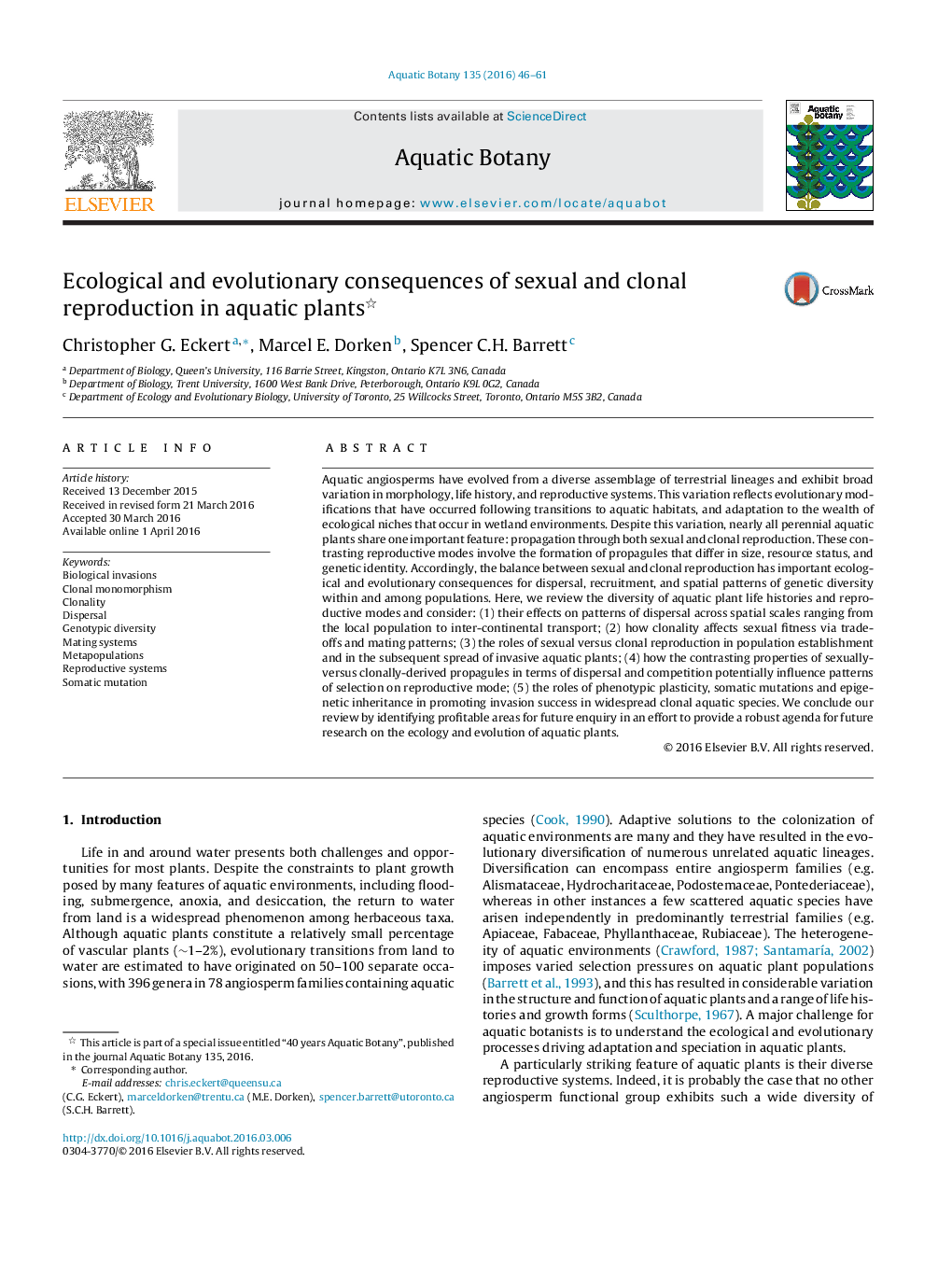| کد مقاله | کد نشریه | سال انتشار | مقاله انگلیسی | نسخه تمام متن |
|---|---|---|---|---|
| 4527562 | 1625807 | 2016 | 16 صفحه PDF | دانلود رایگان |
• Aquatic habitats host an ecologically and phylogenetically diverse assemblage of plants.
• Yet most aquatic plants reproduce by both sexual and clonal asexual propagation.
• The balance between these reproductive modes affects patterns of dispersal.
• Dispersal, in turn, influences the ecology, demography and genetics of populations.
• Plasticity, somatic mutation and epigenetic variation may enhance clonal success.
Aquatic angiosperms have evolved from a diverse assemblage of terrestrial lineages and exhibit broad variation in morphology, life history, and reproductive systems. This variation reflects evolutionary modifications that have occurred following transitions to aquatic habitats, and adaptation to the wealth of ecological niches that occur in wetland environments. Despite this variation, nearly all perennial aquatic plants share one important feature: propagation through both sexual and clonal reproduction. These contrasting reproductive modes involve the formation of propagules that differ in size, resource status, and genetic identity. Accordingly, the balance between sexual and clonal reproduction has important ecological and evolutionary consequences for dispersal, recruitment, and spatial patterns of genetic diversity within and among populations. Here, we review the diversity of aquatic plant life histories and reproductive modes and consider: (1) their effects on patterns of dispersal across spatial scales ranging from the local population to inter-continental transport; (2) how clonality affects sexual fitness via trade-offs and mating patterns; (3) the roles of sexual versus clonal reproduction in population establishment and in the subsequent spread of invasive aquatic plants; (4) how the contrasting properties of sexually- versus clonally-derived propagules in terms of dispersal and competition potentially influence patterns of selection on reproductive mode; (5) the roles of phenotypic plasticity, somatic mutations and epigenetic inheritance in promoting invasion success in widespread clonal aquatic species. We conclude our review by identifying profitable areas for future enquiry in an effort to provide a robust agenda for future research on the ecology and evolution of aquatic plants.
Journal: Aquatic Botany - Volume 135, November 2016, Pages 46–61
